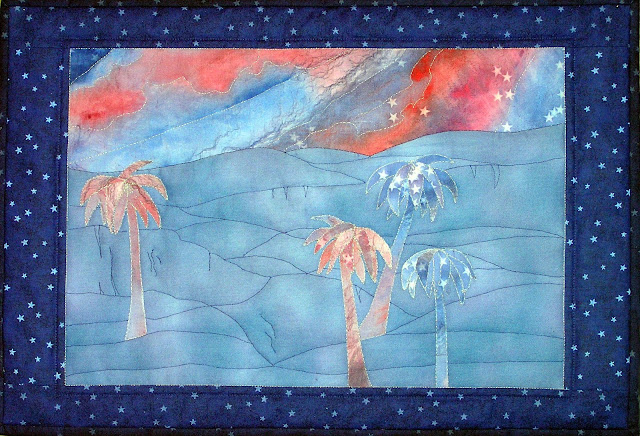One day my friend Joan phoned me up. “I have this crazy idea” she said. A mixture of fear and excitement charged the phone line between us.
“Do you remember Bob Ross?”
Bob Ross, why was that name so familiar? I was pretty sure he was a sort of mildly famous person, or maybe he was that chiropractor who’d fixed my neck.
I was non-committal. “Sort of…”.
“He’s that painter on TV” she said. Ahhhh yes, of course, Bob Ross. Curly afro’d hair, gentle soul, kind voice, fabulous landscapes turned out in a half hour. The Joy of Painting! A man with enough magic to make you think that you too could paint the gorgeous scenes that effortlessly appeared on his canvas. He always wielded this giant palette and you couldn’t help but want one of your own to brandish.
“What about him?” I worried that maybe he was coming over to dinner, and I’d be needed to make emergency dessert.
“Have you ever heard of Cherrywood Fabrics?” This time I was sure of my answer – I had not.
She went on to explain that Cherrywood was a company in Minnesota that made hand dyed fabrics and that each year they put out a challenge. For a sum they would send you a bundle of their fabrics, and you would create an art quilt using only these fabrics, 20x20 inches in size. Just like Bob Ross’s paintings, it sounded easy. We would make this a mutual project, and we would knock it off in a day or two. We ordered the fabric.
When it arrived, I waited until Joan and I were together before we did the reveal of the fabric. We sliced open the heavy envelope and there it was. Eight fabrics. At first blush none of the colours exactly went together. Each piece of fabric was a different size, all of them relatively small. A slick of sweat broke out on our mutual brows. What on earth had we done? Joan was not an art quilter; I had never designed a quilt with such a limited and possibly non-harmonious colour range.
I would like to say that ideas came fast and furious. They did not. Looking for inspiration, we went online and looked at photos of Bob Ross’s artwork. Wow – more intricate than we’d remembered, and here we were with a mere eight colours and no palette knife. We sighed and she went home. I slid the fabric under another pile of fabric, an easy place to get lost in oblivion at my house.
Shame took over. Neither of us wanted to be so easily defeated…we took anther stab at it. We kind of liked his barns, and maybe we could do something with a palette shape. Joan was currently exploring curved flying geese, which has nothing to do with geese, but is a series of triangles sewn in a curved path. Slowly we cobbled our concoction together, filled out the paperwork for the contest and hoped for the best.
I got the news in an email that our quilt had been juried in. I was over the moon, and phoned her from my cottage, where the reception is spotty at best. Through the static alternating with dead zone on the phone line I yelled that we were “IN”. At her end, it sounded like a foaming maniac was on the line. She calmly hung up and locked her door.
I wondered if Bob Ross ever had this much artistic angst.
































